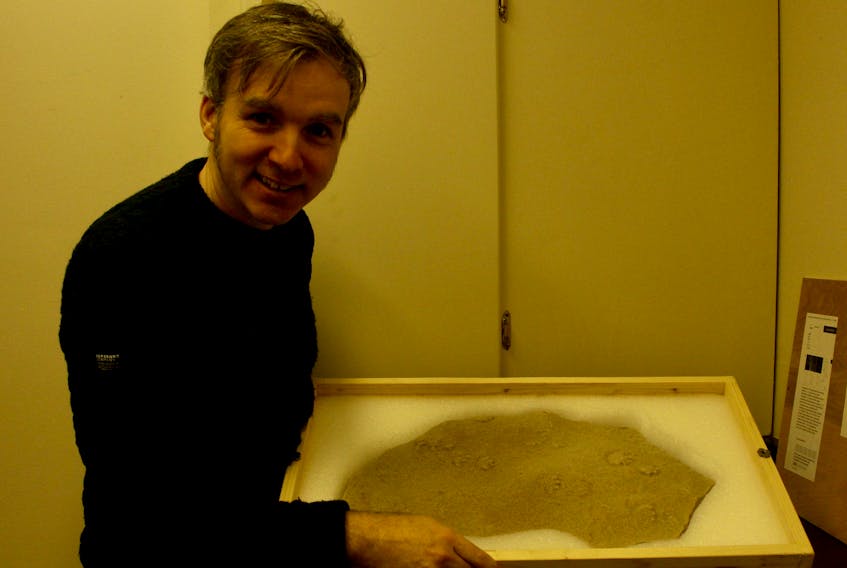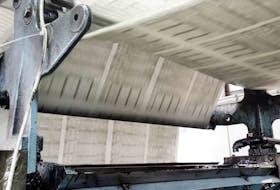CUMBERLAND, P.E.I. — Three hundred million years ago, before flowers or mammals or dinosaurs, the world consisted of one massive super continent: Pangea.
Near the centre, rivers carried red sediment from the mountains which piled up and slowly formed rocks.
One day all those millions of years ago, likely on one of those riverbanks, an unknown critter, an amphibian about 25 cm long, scuttled along, its small feet pressing into the soil.
This story – so old it's hard for the mind to properly grasp it – took place on this Island or at least what would become it, said Matthew McRae, curator of history for the P.E.I. Museum and Heritage Foundation, PEIMHF.
“It’s really telling the story of the Island, where the Island came from and why the Island is the way it is today. This rock is part of that story.”
The rock in question is the fossilized remains of those footprints and would have remained hidden, its story untold, if not for Bob and Pat Sweet, who donated the fossil.
“This fossil’s very rare and definitely very exciting, but I’m sure this won’t be the last one of its kind found on Prince Edward Island.”
-Matthew McRae
Early in July of 2019, the Stratford residents were walking along a beach in the Cumberland area with their grandsons who were enamored with dinosaurs and fossil hunting.
Bob and Pat didn’t expect to find anything but some shells and, if they were lucky, sea glass.
Then Pat pointed out a funny looking rock resting on top of another rock, she said.
“I just thought it was a piece of concrete with cat prints on it to tell the truth.”
Bob thought different, so they took it home. Knowing his barber was an avid beachcomber, Bob showed him a picture.
The barber said he should take it to Beaconsfield Historic House. So he did and the rest is history.
A paleontologist from Nova Scotia examined the prints, dated them and determined the size and type of creature.
Though similar to two other types of previously discovered prints, there are enough differences they could be something entirely new, but that will take more study, said McCrae.
“My hope is that the first thing we’ll focus on is finding a way to share this with the public to put it on display.”
Why is our Curator of History smiling so wide? Welp, it’s not everyday someone donates a rock containing 300 million-year-old fossilized footprints. But how old is 300 million years, really? Let us explain:#aThread #PEIMuseum #7sites pic.twitter.com/QDYPv30tL5
— PEI Museum (@PEIMuseum) January 6, 2020
Certainly, the interest generated by McCrae’s Twitter thread about the fossil – part of an ongoing series of Artifact of the Week posts – has him looking ahead instead of back for a change.
“This fossil’s very rare and definitely very exciting, but I’m sure this won’t be the last one of its kind found on Prince Edward Island.”
He is quick to caution anyone going out to hunt for fossils of their own, both for their own safety and the safety of the fossils, to leave them where they are and contact provincial officials so they can be examined properly in their full context.









